Our correspondent Mindy Jones is a Seattleite living in Paris for two years. When she's not busy trying to figure out what the French are saying, she's busy trying to figure out what to say to the French. She posts frequently at An American Mom in Paris.
 This is a photo to let you know that Mindy is really in Paris.
This is a photo to let you know that Mindy is really in Paris.
Welcome to the next chapter of our wind-swept saga of love, life, partial nudity, and toilet paper in Paris.
The immigration people summoned us. Alex and I needed official medical exams before we could receive our carte de sejours. We arrived at the austere government building prepared for our delousing, or whatever they were going to do to ensure we didn’t infect the French with terrible things, and were ushered into a waiting room full of sweaty and nervous people.
Lucien was with us, of course, which is always a challenge in any waiting room scenario. Our kid was born with an intense desire to entertain those who do not wish to be entertained.
I was led into a tiny changing room and instructed to take everything off from the waist up and "wait." I did this and while I'm no puritan, I looked around the room wildly like, "Are you kidding me? No GOWN?" Then a second door flew open and I was faced with a large room full of people. They were people in white coats, but still, people in white coats I hadn’t invited to a private sexy dance.
I walked across the room to the lung x-ray machine. I was nervous so I walked fast with shoulders hunched and forgot to swing my arms. I may or may not have looked like an ape. After the x-ray I tried to saunter more casually back to the changing room, to prove America’s totally cool with nudity and not uptight at all, but my true feelings betrayed me and I quickly became a prudish American blur. I hate playing into stereotype.
They asked if I wanted to keep my lung x-ray. I said no. Everybody says no except for Alex, who came walking down the hall, grinning and waving a super-sized manila envelope over his head. “You took it?” I asked in disbelief. Al responded, a bit defensively, “I may need it someday,” and clutched it possessively to his lungs. We came home and hung it in our window. It’s a creepy piece of art but it was free. ...
We headed out early Tuesday morning, bound for beautiful BC. Shrouded by fog, we crawled through Seattle rush hour traffic, stopping and starting until King County receded in the rear view mirror. Just north of Bellingham, the clouds parted, the fog lifted and there were only blue skies ahead.
My longtime companion and I are on our semi-annual trip to see Danny Michel, the Kitchener-Waterloo based musician whom a coterie of devoted fans consider to be the best contemporary English-language songwriter in North America. My companion, a tri-lingual former radio DJ and classically trained pianist and organist, is actually much better qualified to judge these things than I am: she considers Danny Michel to be the best all-around contemporary musician working today, period, end-of-story, talk to the hand. Our individual personal opinions aside, Danny Michel only tours the west coast about every other year, so when he's nearby we drop everything and drive north. Well, she drives. I ride.
The first stop on this year's tour is Duncan, BC, nestled in the Cowichan (pronounced "coe-w'-chin") Valley. Cowichan means "the Warmlands" and is an apt description of the area. Cowichan is the warmest place in Canada, the northern equivalent of the Napa Valley. Wineries flourish, and oeniphiles looking for a fix scorn California in favor of this little-known gem on Vancouver Island. Lodging is relatively cheap, the food is wonderful, Canadians are always delightful hosts, and Vancouver Island is so fantastically beautiful that I would move here in a smokin' hot second....
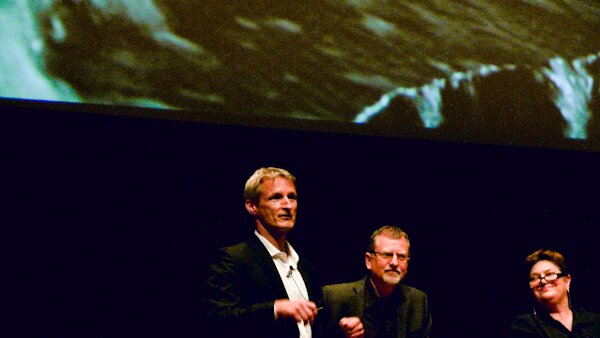 For WRT, Atelier Dreiseitl's "German guy" talks about what you can do with water. (A lot.)
For WRT, Atelier Dreiseitl's "German guy" talks about what you can do with water. (A lot.)
The orchestra level of Benaroya Hall was more or less full last night, maybe 1,200 people, for a Seattle Central Waterfront Project design presentation that was in fact a public candidate interview session. What would you do with 20 acres of "new" public space, around nine of which is actual waterfront? (In his introduction, the DPD's Planning Director Marshall Foster led the audience in a raucous cheer for the Viaduct finally coming down.)
A little while ago, the city of Seattle shortlisted four candidate firms for lead waterfront designer, and this event was supposed to find out how they "clicked" with Seattle (Seattle in this case being largely "people who live downtown" and "people who work for local architectural firms").
Since the design process is supposed to start this October, the finalist should be chosen fairly soon, probably next week. To judge from Twitter, locals GGN either packed the audience with partisans or really smacked it out of the park. (Look, you have your heuristics, I have mine.) Review the presenters' PowerPoint decks at your leisure.
For a concise summary of the evening's presentations, I direct you to the Stroupe Group (or, if you have a subscription, to the Daily Journal of Commerce) while I walk "around" the event and look for salient moments. [UPDATE: Katie from the DJC popped by the comments with links to open-to-the-public stories: This is local commentary on the team presentations. This is coverage from the night of. This is a special section overview of each team.]
First, there was some irony in the Department of Planning and Development organizing the evening; I would swear that as of the day before, when I visited their site to confirm the time, I was still being told to show up at 6 p.m., but last night a piece of paper taped to the doors alerted me and about 50 others that the new time was 7 p.m. Seems like a misstep, doesn't it, for a planning agency to need to make a last-minute change?...
Today the World Trade Organization released a confidential interim report on Boeing subsidies that the Wall Street Journal is already reporting criticizes payments to Boeing from the Department of Defense and NASA. And "without going into details," Ecology and Transport Minister Jean-Louis Borloo said, the report "finds in favour of the essence of the European Union's complaint."
UPDATE: Senator Maria Cantwell has issued a statement as well:
While I can’t discuss the details of the WTO’s preliminary ruling, I can say that the WTO panel rejected 75 to 80 percent of the European Union’s originally alleged subsidy claims. In dollar terms, the WTO found only a small fraction of the $20 billion in subsidies alleged by the EU. Most of those subsidies have long since been withdrawn. Importantly, the findings did not identify any existing prohibited subsidies, contrary to some media reports.
Allegedly unfair subsidies for Airbus and Boeing have been taking up a good deal of WTO staff time recently. France's stalwart defense of the WTO's ruling represents a marked shift since Airbus was found to have received some $20 billion in prohibited European subsidies in June. Then, the Wall Street Journal could find little WTO credibility on European shores:
Airbus officials said the EU would appeal the ruling. "There's not a single WTO case that hasn't been changed on appeal," an Airbus official said.
While on the one hand, the amount of aid appears roughly comparable in both instances (some $20 billion for Airbus and $24 billion for Boeing, which includes Washington state's tax breaks for the aircraft manufacturer), Boeing emphasized in a statement that there's subsidies and then there's subsidies....
 The High Point PV installation (Photo: A&R Solar)
The High Point PV installation (Photo: A&R Solar)
You have to drive out to West Seattle's Delridge district to see it, but High Point, designed to be an entirely green affordable-living community (Oh, those crazy Clinton years), is now the home of Seattle's biggest solar power installation.
West Seattle Blog went out to visit the High Point Neighborhood Center, whose roof is providing the solar panel space necessary, and caught up with A&R Solar (an employee-owned company) as they installed an additional 128 panels (to an original 256), upping capacity to 73.6 kW.
A&R Solar's Dave Kozin says that's enough, for perspective, to power 15 to 20 homes. Of course, High Point's construction is not supposed to be average--"All homes meet a minimum of Built Green™ 3-Star standards, with many achieving 4-Star level and ENERGY STAR® certification"--so perhaps we can expect even more bang for the photon at the Neighborhood Center as well.
Once more, we refer you to the West Seattle Blog for energy-saving details.
The City of Seattle was a major funder of the project that, with installation and panels included, cost about $117,000. In the event that the panels produce more energy than the 20,000-sq.-ft. center needs, the whole system is tied into the grid so that City Light gets electricity back.
But we're sunless in Seattle, you cry? We covered that already in our Sunergy profile: Clouds still let plenty of light through, and our long, long summer days make up for long, long winter nights--in fact our weather cycle works very well with solar because when solar production is down during the winter, our hydropower is going gangbusters. When water flow is down during summer, solar power steps up.
Lake Ann is not a big lake, but what she lacks in size she more than makes up for with her grace and charm. She's also a calming force and an escape of sorts, from the surrounding drama of our main star, Mount Shuksan. When Shuksan is not fogged in it seems to spread itself across the entire sky. When it begins to feel like too much, one can simply turn around. Ann is there.
Fairly popular among day-hikers, you'll see everyone on this trail from hardened mountain lovers to families and even white-haired grannies. That said, it's not exactly an easy hike. At 8.2 miles and 1,900 feet of elevation gain (both round trip), Lake Ann is a bit more of a day hike than I'm usually up for, so, to those grannies who actually get there and back in a day, much respect.
As for my friends and me, we decided to backpack in and stay two nights at the lake so we could do a day-hike to the Lower Curtis Glacier on Mount Shuksan.
We began our hike on Friday afternoon, Labor Day weekend. The sun was shining and the sky was clear. A more perfect day simply could not exist for hiking in the North Cascades, where everywhere you look there are craggy, snow-capped peaks vying for your attention. As we set off on the trail with our heavy packs, we were almost giddy with excitement. Unlike a lot of trails you'll find, this one actually drops in elevation by about 900 feet from the trail head, winding its way through lush forest and eventually landing in a gorgeous little valley where dogs and humans alike may cool off in the many creek crossings. Views of Mount Baker and the surrounding mountains kept us stopping often for photos.
Another crossing and the trail then moves back into the trees, winding its way along the toe of the Shuksan Arm before bottoming out again at a junction where one may choose to go straight for Lake Ann, or turn right for a trail down the Swift Creek Valley to Baker Lake. From this junction, the trail climbs and climbs and climbs. We navigated switchbacks, scree fields, and the seemingly never-ending 1,000-foot slog up an exposed ridge, sucking water like crazy from our CamelBaks....
Mayor McGinn announced that he'd talked the unions representing city employees into letting go of their two-percent COLA; instead they get 0.6 percent. The city's projected deficit for 2010-12 has grown by $11 million, to $67 million, since April. That kind of pressure has led the city to blackmailpressure MOHAI into giving up relocation funds won from the state, with MOHAI reaching DEFCON 1 ("We'll close, we swear it!") in short order.
Boeing got local-source religion. Microsoft worked on cementing their image as the Evil Empire. Amazon may have leaked Office for Mac 2011's ship date. Starbucks decided drive-through customers were really thirsty.
Cliff Mass says the only question is how strong our La Niña winter will be--cold and wet, or colder and snowier. While the Howard Hanson Dam situation has improved, "Now is not the time to relax," says King County Council's Julia Patterson. Wet weather isn't good news for residents of Redmond's mold-infested Riverwalk condos, but stay tuned--I hear the cavalry may be coming.
Around the neighborhoods, Capitol Hill residents learned they have deer and a start-up incubator. TechFlash took a tour of Belltown's PopCap Games. Eastlake's Floating Homes tour is Sunday, Sept. 12. "Seattle’s Landmarks Preservation Board voted to nominate the community-center building and steam plant at the 580-unit Yesler Terrace public-housing project for landmark designation."...
To fully understand the city of Seattle's economy, character, and beauty, you sometimes have to head out on the water.
The Port of Seattle has been conducting educational tours of key Port facilities to alert community leaders and media to the importance of Seattle's maritime industry and the many issues challenging that industry.
This past Wednesday, the Port hosted Ship Canal 101, an afternoon cruise from Fishermen's Terminal to the Fremont Bridge, then to the Hiram Chittenden locks, and back to the Terminal. The tour was narrated by many of the business owners and employees of the--surprisingly--large number of businesses in this short, narrow corridor.
There's no doubt that such tours are good PR, but that aside, there's plenty to learn.
Leaving from Fisherman’s Terminal, you get a great view of the size and scope of the city's Pacific fishing fleet. For all the talk of Seattle as a biotech center, a software empire, and aviation powerhouse, a large chunk of the city's economy is still tied up to the docks at the terminal, one of the major fishing ports along the coast prized for its protected freshwater berths (salt water is murderously tough on steel hulls), access to repair facilities, and transportation to waiting markets. The Port estimates that the activity at the port annually generates 4,000 jobs, half a billion in wages, $200 million in business revenue, and $37 million in state and local taxes....
 Seattle bed bug incidents, via Bed Bug Registry
Seattle bed bug incidents, via Bed Bug Registry
Last week I fanned the flames of bed bug hysteria without being able to offer solid numbers on the extent of Seattle's infiltration by the pests. (No, don't mention it. Happy to.)
The Bed Bug Registry lists 76 reports in Washington over the past two years, but I was hoping for something more Seattle-centric.
Happily, Daniel Valenti, Seattle branch manager of the pest control specialists Terminix, had an actual statistic for me. His office has seen a 57 percent increase in calls about bed bugs since last year--with the caveat, though, that the more press bed bugs get, the more they get blamed for every bite people notice.
Still, it's probably better to rule out bed bugs than wait to see what happens. ("Think you have bed bugs?") Valenti says a single pair of breeding bed bugs can develop a brood of up to 1,000 in just three months. Each female bed bug can lay hundreds of eggs in her life, and those eggs take only six to ten days to hatch. To make sure they get every last one, Terminix actually does two follow-up treatments, two weeks apart.
It's not just hotels where these little hitchhikers show up. Valenti says they travel to clothing stores (first- and second-hand), furniture stores, and even movie theaters. Usually a pesticide is applied in a chemical application, but in some cases where better living through chemistry isn't appropriate, a super-heated steam suffices to kill the bugs and their eggs.
Our correspondent Mindy Jones is a Seattleite living in Paris for two years. When she's not busy trying to figure out what the French are saying, she's busy trying to figure out what to say to the French. She posts frequently at An American Mom in Paris.
When we last heard from the Reluctant Parisienne, she was jet-lagged, befuddled by her appliances, and eating baguettes while spying on rich people. This time, she encounters what is to become her nemesis throughout her time in France--the French grocery store.
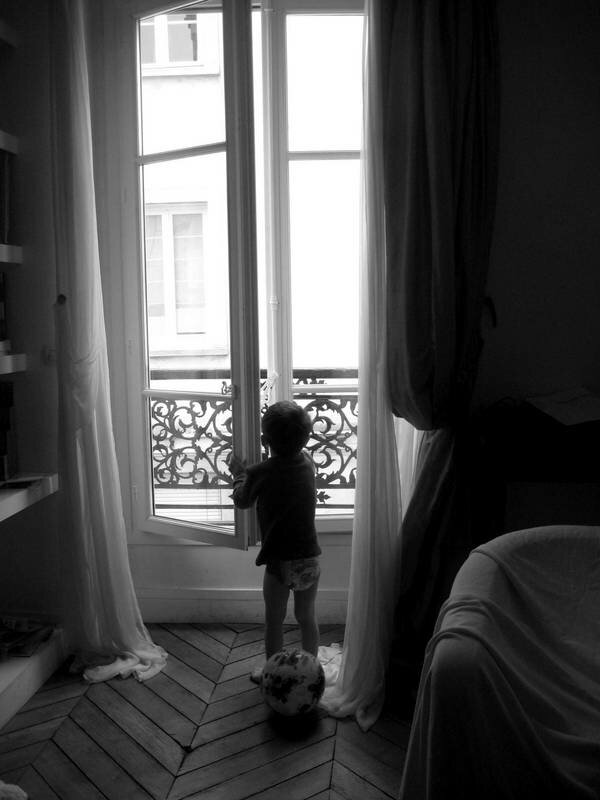 The inevitable day came when Alex went to work. I did not enjoy watching my French-speaking husband walk out the door, but I forced myself to feel optimistic. My French was decent, right? I’d studied it in high school and college and could still sing the French alphabet song. How badly could I screw up? (See below.)
The inevitable day came when Alex went to work. I did not enjoy watching my French-speaking husband walk out the door, but I forced myself to feel optimistic. My French was decent, right? I’d studied it in high school and college and could still sing the French alphabet song. How badly could I screw up? (See below.)
Lucien and I began our first solo day by taking a long walk around our neighborhood. I was quickly intoxicated by the undeniable charm and beauty of Paris. The French people we passed on the narrow sidewalks smiled at Lucien and nodded at me with polite "Bonjours." I was feeling quite good about the whole thing.
We entered the grocery store. My Paris-drunk buzz faded to confusion as I scanned the shelves and didn’t recognize a single item. I started putting things in my basket just because I knew what they were. I didn’t need laundry detergent and I don’t like yogurt, but the Tide box was so cheery and the Yoplait suddenly so maternal and comforting.
I set my basket on the belt at checkout and smiled brightly at the checkout girl. She looked briefly at my basket then said something in rapid-fire French. I totally froze, FROZE. And despite all my super productive years of French instruction, do you know what I said back to her? "Trois." That's right, I SAID "THREE."
She stared at me blankly. I desperately wanted to salvage our relationship so I threw out another gem--"Moi." Let’s recap. I said "trois," then "moi," and then I stood there smiling at her like goddamn Carol Channing. I knew I was dangerously close to singing the French alphabet song....
 The "he said/she said" in my Twitter feed
The "he said/she said" in my Twitter feed
The Seattle Times has a habit of reporting on accidents involving the light rail thusly: "Car hit by light-rail train in Seattle." (For more instances, go here.)
In reading the story, you learn that the car "attempted to make a turn onto Othello Street against the light" and collided with the train. Seattle Transit Blog writes it up that way: "Car Collides with Link."
For contrast, try to imagine if the Times reported on car accidents in ways that gave no indication who caused the accident: "Car hit by other car in Seattle this morning." Doesn't seem newsworthy does it?
But in the Times headlines, light rail is always implicitly the agent of destruction: light rail "injures two" (who tried to make an illegal left turn in front of a sign marked No Left Turn), a woman "sustain[ed] injury" when she ran into the light rail, and a girl talking on her cellphone who stepped into the trackway was "struck by light-rail train." In none of these cases did the illegality, incompetence, or obliviousness of the person who caused the accident make it into the headline.
"Light-rail train hits pickup"--making an illegal turn, as it happens. From the Times headline (not even in the passive voice this time), you'd have to assume the light rail was at fault. Otherwise you might have read an investigative story about how Seattle drivers' illegal left turns are costing a cash-strapped Sound Transit a bundle further damaging light rail's reputation for reliability.
Several months ago, writes the Seattle Chamber's Christine Donegan, Seattle employers issued a joint appeal to Mayor McGinn and City Council to avoid raising taxes to balance the 2010 and 2011 budgets. As a follow up, twenty-two business organizations have issued a letter to the mayor and council with specific suggestions for balancing the budget without negatively impacting employers or essential city services.
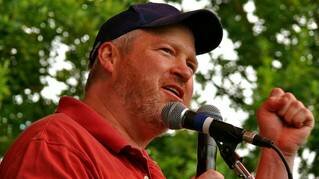 Mayor Mike McGinn, introducing The Maldives at Bumbershoot
Mayor Mike McGinn, introducing The Maldives at Bumbershoot
Dear Mayor McGinn,
In April, over two dozen representatives of Seattle employers wrote to urge you to refrain from increasing existing taxes and proposing new taxes to balance the City’s 2010 and 2011 budgets. We believe that burdening employers with additional taxes will slow economic recovery in Seattle. As a follow up to that letter, we write to offer specific suggestions for balancing the City’s 2011 budget that will preserve jobs and critical City services.
As you are well aware, the City of Seattle faces a projected $67 million shortfall between planned expenditures and anticipated revenues in 2011, with $11 million less in revenues than previously predicted. However, the City is projected to collect more General Fund revenue in 2010 than was collected in 2009 and this trend is anticipated to continue through 2012.
Between the year 2001 and 2011, General Fund revenues will have grown by 45 percent, 18 percent when adjusting for inflation. The City’s budget shortfall is not driven by decreasing revenues, but rather as a result of expenses that are increasing at a rate greater than revenues and a rate greater than Seattle’s Consumer Price Index (CPI)....
 Jackson Plaza illustration courtesy SDOT
Jackson Plaza illustration courtesy SDOT
"Oh look, mommy, flowers!"
One of the amazing things about redesigned public spaces is how rarely the homeless and transient people who may already congregate in the area are seen enjoying the new look.
Here, the new Jackson Plaza, replacing a parking lot that used to sit north of the King Street Station, gains a grove of trees fronting Jackson Street and--directly in the diagonal you'd expect people to walk to and from the station entrance--a planter area.
SDOT's Brian Henry, Associate Transportation Planner, graciously sent along these visualizations when I asked about the plaza's new look, but when I asked for a rationale for the design--("Can you tell me who is designing the plaza, and would they like to explain their ideas? I have to say at first glance it seems terribly unsuited as a place for people to walk through on the way to the train.")--we seemed to lose email contact. Three weeks later I still haven't heard back....
Mike Lindblom's article in the Seattle Times this morning, "Cash-strapped Metro targets drivers' pay," imparts the knowledge that currently King County Metro bus operators' average yearly income, "including overtime, is almost $61,000 a year." That turns out to be a salient point, the inclusion of overtime.
It takes six years for a driver to reach the top end of the pay scale (almost $60,000, before overtime), reports Lindblom, noting that last year, "255 drivers made more than $75,000, with 20 of those topping $100,000."
That is, about ten percent of Metro's drivers worked $15,000 worth of overtime, and 20 operators worked $40,000 worth. You might think they're getting rich off time-and-a-half, but here's the thing--it costs less to work an existing driver than it does to hire a new one. In fact, a King County audit says that rather than hire more full- and part-time employees and be stuck paying benefits, Metro should look at increasing its overtime hours.
When Washington Public Policy Center claims "Bus driver wages grow out of control" because of overtime, what they are noticing, ironically, is Metro's attempt to keep operator costs down....
Written from within the luxuriously appointed media room at Bumbershoot, stocked with both apple *and* orange juice!
"An agonizing crawl" is how the state's chief economist, Arun Raha, describes the economic recovery in Washington. "Anemic," "risk," "uncertainty," and "weaker" are also keywords. While corporate profits are now higher than pre-recession levels, Raha says:
We have cut our 2011 employment growth forecast roughly in half, from 2.7% to 1.3% (annual average basis). We do not expect to reach our prerecession peak in overall employment until the second quarter of 2013.
On the local front, both Costco and Nordstrom won praise from Barron's for their Q3 results. TechFlash reported on AT&T's boost to the signal at Qwest Field and Husky Stadium. The Storm continue to be awesome. Native Americans are understandably still outraged that a wood carver was shot to death by Seattle police. Keeping the unfortunate streak going, police shot an armed, reportedly suicidal man in West Seattle yesterday. Sound Transit will run one-car light rail during low-demand times to save money.
In Belltown, the Croc is "absorbing" the Via Tribunali space. The CD News had their own armed shooter to report on. Eastlake was plagued by a rash...of car prowls. A medieval country faire is holed up in Volunteer Park this weekend, battling the tide of modernity that is PAX. Blogging Georgetown envisioned Airport Way South on a diet. Watch out for angry Ents: 140 trees are being displaced for the Mercer Street Improvement Project. Yesler Terrace historic?...
 NOT ACTUAL SIZE! (CDC/ Harvard University, Dr. Gary Alpert; Dr. Harold Harlan; Richard Pollack. Photo: Piotr Naskrecki)
NOT ACTUAL SIZE! (CDC/ Harvard University, Dr. Gary Alpert; Dr. Harold Harlan; Richard Pollack. Photo: Piotr Naskrecki)
Bed bug infestations aren't tracked, so no one's got a number for you, but consider that if they're here, they're going to "do well," as Hickok says. Bed bug reports in New York have shot to 10,000 in 2009, from just 500 in 2004. (At the moment, Bedbugger.com is reporting on an infestation in Google's New York offices, which is not the Google trend anyone wants to see.)
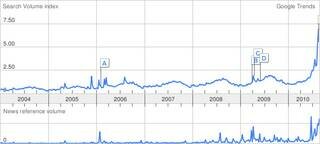 During a bed bug summit here a year ago, a representative from pest exterminator Terminix's Seattle branch said: "Two or three years ago, I'd be lucky to get one bedbug call in a month. Now in my branch alone, I may get two dozen." Again, that was a year ago.
During a bed bug summit here a year ago, a representative from pest exterminator Terminix's Seattle branch said: "Two or three years ago, I'd be lucky to get one bedbug call in a month. Now in my branch alone, I may get two dozen." Again, that was a year ago.
Maybe the best view we have of the infestation's progress is the Bed Bug Registry's citizen reporting. They have a page for bed bug incidents in Washington state, which shows the last two years' reports, and shows a habitat ranging from the Green Tortoise Hostel to the Edgewater Inn....
Having grown up on a farm, I have a problem with eating animals young. Everyone pushes beads around on their moral abacus to justify this or that; in my case, I prefer to think whatever I'm eating had a life first.
On Monday I got this email from Mercy for Animals, alerting me to the animal cruelty embedded in Costco's veal supply line:
Hidden camera video recorded at a veal supplier to the Issaquah-based Wholesale Corporation, exposing baby calves covered in feces and chained by their necks in narrow stalls, where they cannot even turn around or walk, will be released at a news conference Tuesday morning by Mercy For Animals.
You can watch the video below; it's narrated by a ticked-off Bob Barker and features dramatic footage of calves chained in narrow wooden pens (not all of it shot at the Buckeye Veal farm identified, according to Buckeye's statement--which goes on to add that Buckeye is in the process of converting those pens to "group housing").
The video goes on to explain that the dairy industry supplies the male calves, since dairy cows are kept pregnant to keep the milk flowing. Male calves don't produce milk--they just ingest it, the parasites!--so they are separated from the mother and raised for veal.
It seems likely that Mercy for Animals timed their release of the video, shot in April, in time for Costco's Q4 announcement:...
Our correspondent Mindy Jones is a Seattleite living in Paris for two years. When she's not busy trying to figure out what the French are saying, she's busy trying to figure out what to say to the French. She posts frequently at An American Mom in Paris.
We left Seattle New Year's Eve, 2008 and arrived in Paris New Year's Day, 2009. New year, new life. Isn't it just so damn poetic.
We packed up our Seattle things, rented our Seattle house, sold our Seattle cars, and passionately kissed our Seattle friends goodbye (we have boundary issues) to follow my French-Canadian husband's dream of living in Europe. It was indeed his dream, not mine. I'd been to Europe; it was neat.
I'd even been to Paris a couple times; it was pretty. But not once while visiting was I struck with the desire to throw my arms around the person next to me at a cafe and say, "Be my NEIGHBOR, Frenchie!"
I was content being a tourist. My husband, my Alex, was not. His job fortuitously offered him a relocation opportunity--Luxembourg or Paris for two years--and Alex stared at me with pleading eyes. I agreed, but only if we chose Paris over Luxembourg because, well, come on it's obvious. (No offense to Luxembourg; it's a helluva grand duchy.)
I also made Alex pinkie swear we would return to Seattle in NO MORE THAN TWO YEARS. He swore. On his pinkie.
(We're going to be here longer than two years.)
It's been a wild ride. Here's the story, parts of it anyway, from the beginning:
The 10-hour flight went as well as can be expected considering our almost-three-year-old son, Lucien, never stops moving and never stops using his "outdoor" voice. Benadryl got him through. (Ativan got his mama through.)
Then we were in Paris, jetlagged and stuck in a car with a driver who got a giggly thrill from trying to kill pedestrians. Al and I mouthed, "Oh my God!" to each other, eyes wide, all the way to our new 'hood in the 6th arrondissement....
I apologize for the stress I've put on the pun in the headline, but it's nothing like the stress, apparently, that the Gates Foundation put Seattle's Department of Transportation. Back in May, we were all made aware of the Foundation's discontent with how Sixth Avenue North fed cars to the deep-bore tunnel's north portal.
Currently, Sixth Avenue North does not cross Mercer Street. It bends along Broad Street between Harrison and Republican, and for a full block--Republican to Mercer--it doesn't exist before it snaps back to the grid north of Mercer.
SDOT initially planned to reinvent Sixth as a feeder to the tunnel southbound.
The northwest corner of the Gates Foundation campus being in the way, it would have tunneled underneath at a gradual grade (4.5 percent) and thus allowed cars from Mercer or downtown easy tunnel access.
The Gates Foundation, who are putting a building right there, made noises about millions of dollars in mitigation, and this has resulted in the street grid gaining startling curvilinear properties around the political gravity well that is the Foundation's campus.
A few things happen with the curveball option: the grade increases to six percent, a "half signal" allows Sixth Avenue drivers access to westbound Mercer (but not westbound Mercer to Sixth), and pedestrians have to cross Mercer at Taylor or go up and over via Aurora.
(The full signal in the earlier "from below it onramps" option let westbound Mercer traffic turn left on Sixth Avenue North.)
This is the kind of accommodation from SDOT that most private citizens can only dream of, and it's not likely to make hickorystick at Redstate any more well-disposed to what he calls the tunnel's servicing of "Billionaires' Row." (The tunnel's north portal fetching up around Mercer means its neighbors are the Gates Foundation and Paul Allen's Vulcan developments.)...
The news about the Native American man who was shot to death after being found wood-carving in public continues to "develop," as they say. Now it is not clear that he approached the officer threateningly or otherwise, and his family says he was deaf in one ear.
The Seattle Times says Mayor McGinn, "despite several controversial police incidents this year" is confident in his choice of Police Chief Diaz.
"I think Chief Diaz is the right man for the job," McGinn is quoted saying, which has overtones of "Heckuva job, Brownie," coming the same week as King County prosecutors decided that a police officer who told an innocent Latino man he was going to "beat the fucking Mexican piss" out of him was not guilty of a hate crime. The city attorney could still file charges against Detective Shandy Cobane for misdemeanor assault, further endearing himself to the SPD.
McGinn's political deafness has instigated a completely avoidable kerfluffle with MOHAI. Yesterday the Slog reported that the city was making a grab for state funds allocated for MOHAI's SR 520-prompted move from its Montlake location to the South Lake Union Armory.
After directing the museum to negotiate on its own for state funds, estimated to be around $15 million, the city's cartoon eyes exploded from its face when MOHAI came back with $40 million. Quoth Carl Marquardt, lead attorney for the mayor’s office: "This is not a time for any one community organization to be taking all that it can get, while others go without."...
Whew! That was fast. A year ago a few of us pushed off from the shores of Seattlest on our own little raft of words. 165,654 unique visitors and 413,021 page views later, we know a lot more about the people and places of Seattle than when we started, thanks to a staggering amount of arts & culture interviewing from Jeremy Barker and Tony Kay--and of eye-catching contributions to our Flickr pool, which now has 3,200 glimpses of Seattle life in it.
Our top two stories, according to Google Analytics, were "An Atheist's Defense of 'Everybody Draw Mohammed Day'" and "Who Killed Belltown's McGuire? The Cast of Characters," the latter a story I lucked into when our hiking contributor John Hieger emailed me to say he'd gotten an odd note from his property manager.
Seth Kolloen (who's moving on to a life of even more sports) gave us a memorable, sometimes harrowing year in the life of a Seattle sports fan, while Audrey kept tabs on film and TV, especially Seattleites in film and TV, and Josh did everything humanly possible to introduce you to the work of Vincent Moon. We've just welcomed Constance Lambson for books coverage, and Jay Friedman of Gastrolust to our food section--and you'll soon see more on jazz and Paris living (for reasons I'll explain later), as we explore what it means to be a Seattle online magazine.
Seattle, Redmond, and Bellevue are our top cities for traffic. (Tacoma, Everett, Renton, and Portland are in the top 10.) A full 50 percent of our traffic came from Washington state. Who's visiting us? Top business/institutional addresses include Microsoft, UW, Amazon, RIM, Boeing, Costco, and King County and the City of Seattle....
 An afternoon Sounder loads up at King Street Station.
An afternoon Sounder loads up at King Street Station.
The Sounder trains from Seattle to Everett and Tacoma are largely for commuters to Seattle, which is the first thing you notice when checking out their schedules (it's an hour trip for both destinations). The bulk of the runs to Seattle are in the early morning, then back to Tacoma and Everett in the evening. And of course it's weekdays only.
You only have one or two chances to make a reverse commute, depending on where you're headed, but it is possible. If you want to spend the night is Tacoma or Everett, then everything becomes easy as pie. Either way, at just $4.50 (Everett) or $4.75 (Tacoma) each way, it's a bargain, and one that you can use your new ORCA card to pay for, if you're so inclined.
If you disembark from the last train in the evening, you may hear the engine chugging away for some time. Electro-Motive Diesel, Inc., supplies the F59PHI locomotives, and tells me that the engine is usually busy recharging batteries and otherwise transitioning from its day's work. It's self-monitoring and can shut itself off when all systems are back to "green." Even idling, these are large engines and I wondered how green they really were.
Sound Transit runs 11 of the F59PHI locomotives, which emerged from the factory with an EPA Tier 0 rating. "In 2008 we switched to a low-sulfur fuel that burns much cleaner in our locomotives than the previous fuels," says ST's Kimberly Reason. "We replaced all of our Head End Power (HEP) units with a new Tier 2 unit in 2008 as well--the HEP is the smaller engine on a locomotive that provides support electricity to the coach cars for lights, heat, AC, etc."
In 2012, Sound Transit will begin rebuilding the engines to convert to the EPA's Tier 3 rating, which requires tighter regulation of oxides of nitrogen (NOx), hydrocarbons (HC), carbon monoxide (CO), particulate matter (PM) and smoke--in the case of particulates, nitrogen oxide, and hydrocarbon, the reductions range from between 50 to 75 percent compared to Tier 0.
Do not think about heading to Downtown right now, unless you're going on foot. And if you're already Downtown, well, you're gonna be there a while. A Seattle police officer shot and killed a man armed with a knife near the intersection of Boren and Howell, so several streets are shut down, meaning traffic and buses are being re-routed. It is not pretty.
(Thanks as always to Seattle 911 blog for being a reliable go-to resource in just these situations.)
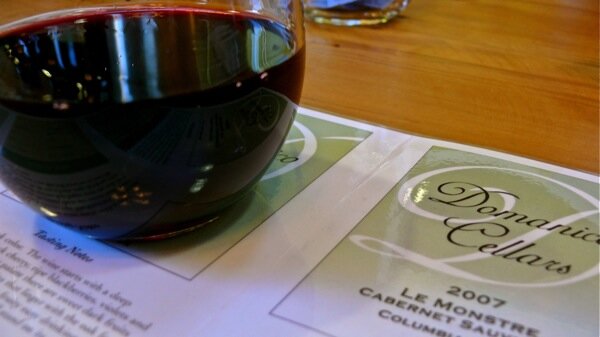 Not all alcohol is created equal. Wine has more beneficial effects than, say, grain alcohol.
Not all alcohol is created equal. Wine has more beneficial effects than, say, grain alcohol.
"Why do heavy drinkers outlive nondrinkers?" is the title of the TIME magazine article (among others). The surprise result from a study published in the journal Alcoholism: Clinical and Experimental Research (which does not seem to be funded by Jack Daniels) is that the mortality rate for nondrinkers is even higher than heavy drinkers.
This is no flash-in-the-pan study, either; its 1,824 participants were tracked over two decades. (Caveat: 63 percent were men.) Participants were between 55 and 65, and the study controlled for "for nearly all imaginable variables--socioeconomic status, level of physical activity, number of close friends, quality of social support and so on," says TIME.
The study's author, Charles Holahan, researches "health psychology, with a specialization in stress and coping," which is a clue to what the answer to the puzzle may be, and how debilitating it is to miss out on socializing regularly.While no one's suggesting heavy drinking is good for you (69 and 60 percent of the study's nondrinkers and heavy drinkers died, respectively, but only 41 percent of moderate drinkers did), it may be that stress and lack of social interaction is worse for you than brain damage and increased cancer risks. (Moderate, by the way, is one to three drinks per day, so it's not a path of ruthless sacrifice.)
Coincidentally, the same day I heard about the study, El Gaucho Bellevue (City Center Plaza, 450 108th Ave. NE) emailed me about their new line of "medicinal" cocktails, four new drinks involving "ginseng, ginkgo biloba, St. John’s Wort, and skullcap." Says lead bartender Chris LeRoy, "With all the stress that people deal with these days, I thought I would take the trend a step further and combine it with the healing properties of natural herbs and tinctures." See? Stress!...
SDOT's blog mentions that they're painting Ts on traffic signal actuators buried in the street, so bicyclists will know where to place their front wheel for best results.
Technically, it's your bike that trips the signal, not the front wheel alone. Even a carbon fiber frame probably has enough metal on it somewhere (gears, cranks) to work. The T should help newbie cyclists especially not to ride right over the actuator, and give them confidence they won't make the fuming line of motorists behind them miss a turn cycle.
There is nothing more wonderful than cycling for looking into how in-group and out-group behaviors develop. This is one instance. When you can't, on a bicycle, get a turn signal actuator to work, you're usually stuck in the middle of traffic. Neither option available (dismounting and using the crosswalk; or making the turn anyway, when traffic permits) inspires confidence in the drivers around you, who more than likely have no idea you can't get the light to change.
Every time a cyclist doesn't appear to be obeying the rules of the road, it counts against cycling in general. This is that in-group, out-group thing I mentioned. Some of these instances have to do with learned understanding, as with this actuator example; you don't really know why a cyclist is doing what they're doing (whether it's legal or not) until you've ridden yourself....
Hello!
Twitter: @thesunbreak | Facebook
iPhone app download (Free!)
Subscribe to The SunBreak
Delivery Options
![]() Subscribe to all SunBreak Stories
Subscribe to all SunBreak Stories
Daily Email Digest of The SunBreak
Most Viewed Stories
Recently in Our Flickr Photo Pool
www.flickr.com
|
Our Facebook Fan Page
Neighborhood Blog News
Niche Blog News
Seattle Weather
Get the SunBreak iPhone App

Download the SunBreak iPhone app for free.

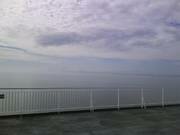




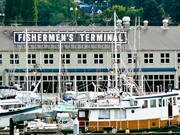
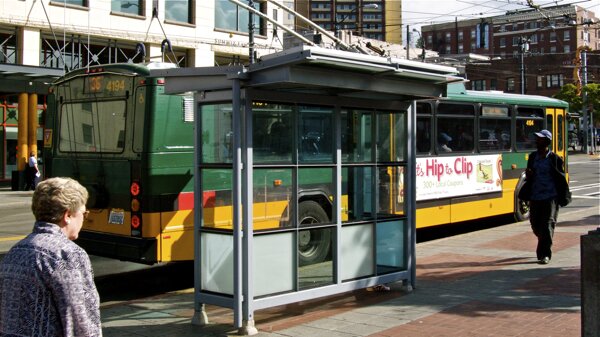
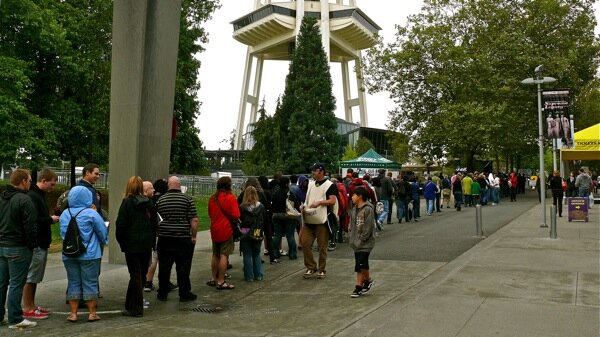



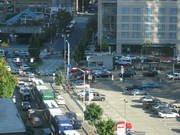

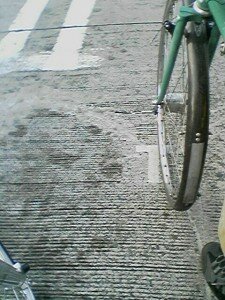


Most Recent Comments